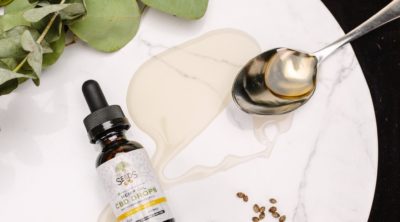
Pulsatile nasal irrigation is aimed at restoring the normal movement of nasal cilia, which is crucial for getting rid of pathogens and preventing infections. A motor-driven pulsatile nasal irrigator device is required for this specific approach of nasal wash treatment. Read on to know more.
Nasal irrigation, or nasal lavage, is medically proven as a safe approach for sinusitis relief. It is also adopted for treating nasal problems and allergies. Nasal irrigation can be conducted manually, or with the help of specialized equipment, such as neti pots, bulb syringes and irrigation machine. In the pulsatile nasal irrigation, a device having motor-driven pump is used to conduct the saltwater rinsing procedure. And the machine used for performing this type of nasal irrigation is called pulsatile nasal irrigator.
What is Pulsatile Nasal Irrigation?
All of us are already familiar with the practice of nasal irrigation. It involves purging of excess mucus and removing unwanted particles from the nasal passages and sinuses. The machine for irrigation is configured in such a way that the speed of solution flow to the sinuses can be adjusted in a pulsating manner. In other words, the pumping action (pulsation) of pulsatile nasal irrigator is monitored to match the normal oscillation of healthy cilia, present in the nasal and sinus passages.
As with any approach of nasal irrigation, saline solution is used to carry out the pulsatile nasal lavage process. There is no point in flushing sinuses with plain water, as it may cause irritation to the nose and sinuses. The salt solution works by removing mucus to clear nasal congestion, reducing production of excess mucus and treating postnasal drip. Overall, the pulsatile nasal irrigation helps in stimulating nasal cilia to beat normally (back and forth), thereby providing long-term improvement of sinus health.
Pulsatile Nasal Irrigation for Sinus Problems
According to proponents, this nasal wash treatment is effectual to restore normal functioning of sinus cilia, thereby promoting quick recovery of sinus infections. In order to proceed with nasal irrigation, one has to have a thorough knowledge about the procedure. As for performing pulsatile nasal irrigation, first understand the working mechanism of the device. The best way is to go through the user directions that come with the product, which explains the successive steps along with pictures.
- Hoping that you have understood the usage instructions clearly, begin with the water filling step. Strictly use warm water to fill the basin till the suggested level. Lukewarm water is preferred over cold water, so that the body can tolerate it without adverse reactions.
- For preparing the irrigation solution, add irrigation formula (uniodized salt or kosher salt) to the water. The salt amount will vary, depending upon whether you want to use isotonic or hypertonic solution to flush nasal passages.
- In general, one teaspoon of salt is added in 500 cc of water for irrigation. Following this step, adjust the pressure knob according to the recommended directions (may be one inch high). With this, you are now ready to proceed for actual nasal irrigation.
- Lean over a sink with your head tilted down, and run the pulsatile nasal irrigator. Nasal irrigation is usually suggested for 30 seconds per side, and accordingly you can continue nasal wash treatment. Change to another side after the stipulated time is over.
- When performed correctly, it may take about 3-5 minutes to perform the nasal irrigation. As nasal cilia start oscillating normally, pathogenic bacteria can no longer linger in the nose and sinuses. This way, the risk of sinus infections is reduced to a greater extent.
A plus point of pulsatile nasal irrigation is, it is less messy unlike using bulb syringes and neti pots. As the machine does the irrigation work, there is no issue for faulty application of salt solution. Some models of pulsatile nasal irrigator are designed with added features (adapter) for tongue cleaning and throat cleaning. The benefit of such devices is to ensure problem free breathing, which is a challenge for patients afflicted with chronic sinusitis problems.


